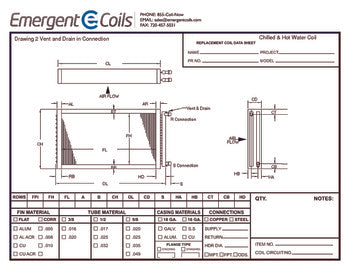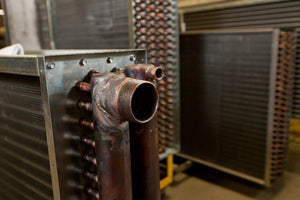
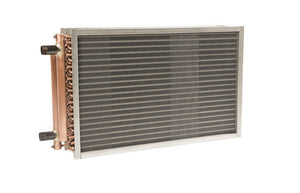
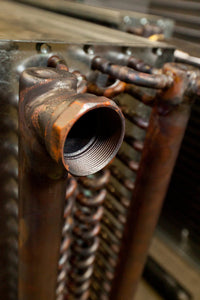
Chilled Water Coil
Quality new chilled water coils that fit and perform to tight specifications, whether for original equipment or replacement.
- How it Works
- How to Measure
- Components Explained
- Blank Drawings
- Common Brands
- Shipping
- Top Selling
How Chilled Water Coils Work
Chilled water coils also known as hydronic cooling coils are typically used to cool or remove moisture from air streams. The air to be cooled moves through the fins, and either water or an ethylene or propylene glycol solution move through the tubes. This is a type of heat exchanger mostly used in commercial and industrial air handler units.
A simple form of water coils have been around for centuries. The first “modern” heat exchanger using water was invented by William Blakely in 1796. However Water Tube boilers date back almost 2,000 years. More commonly used cooling in the world today are refrigerant systems.
How to Measure a Chilled Water Coil
Chilled Water Coil Components Explained
There aren’t many parts to a chilled water coil but it still helps knowing the parts before placing an order or calling for a repair. If and when a coil is to leak it usually happens in the copper u-bends. But pressurized water will leak at the weakest point and this can happen in the middle of a coil behind the fin pack. When this happens it is impossible to fix without destroying the fins and therefore losing a lot of efficiency in your coil. Here is a quick rundown of your coils parts.
As simple as a chilled water coil can be, you still have options when it comes to the materials. Different materials allow for different performance and longevity.
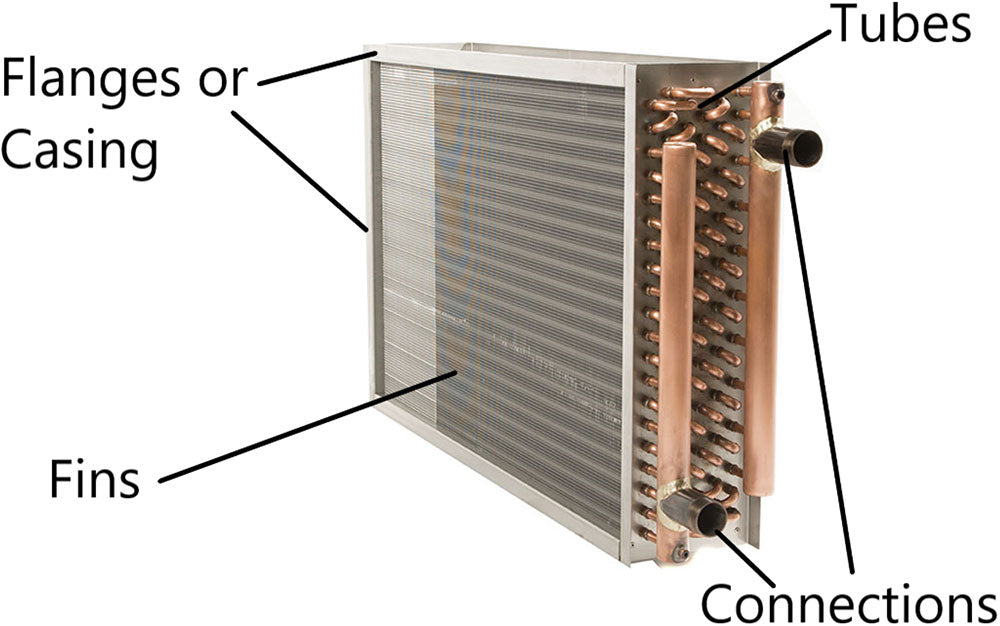
Tubes Material Options:
- Copper / Most common and offers best heat transfer
- Stainless / Often used for high pressure and high heat applications. Comes 304 or 316 SS
- Steel / Common for high steam application
- 3/8, 1/2, and 5/8 are available. Although 5/8 inch tube diameter is the most common selection for chilled water coil because it offers many wall thickness options which can increase the lifespan before tube erosion becomes a problem
Fin Material Options:
- Aluminum / Most common and cheapest options
- Copper / Often used in corrosive environments
- Stainless / Also used in corrosive or food grade environments
- Connections Materials and Types
- Copper, Brass, Steel, Stainless
- Female Thread, Male Thread, Sweat ODS
- Size range ½” to 4”
Casing Material:
- Aluminum / Cheapest and most common
- Copper / Common in corrosive environments
- Stainless / Common in corrosive or food grade environments
Blank Drawings
Common Brands We Replace
- Carrier
- Heatcraft
- Leenox
- Mcquay
- Trane
- York
Shipping Options for Chilled Water Coil




